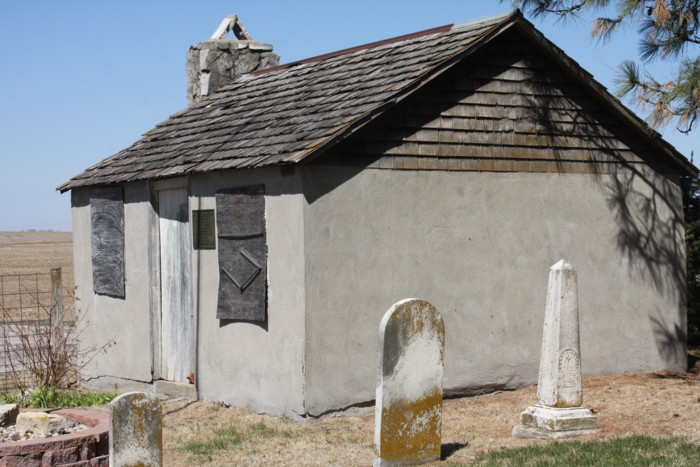
The Young Cabin is at the Young Cemetery and is on the National Register of Historic Places. The cemetery was established in 1855. The cabin was built by the National Youth Administration, a New Deal work project and vocational training program established for the country's young adults. A dwelling originally constructed in 1856 on the William Young family homestead was disassembled in 1941 and its materials, including the hand-hewn logs, were used in the construction of the Young Cemetery Cabin by National Youth Administration workers .
About the National Youth Administration
The huge numbers of unemployed youth of the 1930s underscored several fears adults had for society. Conservatives saw disgruntled young people as a fertile ground for revolutionary politics while liberals mourned the disillusionment and apathy spreading among American youth. Educators feared that without some type of financial aid, colleges would suffer irreversible damage. ER [Eleanor Roosevelt] worried that long-term unemployment and borderline poverty would undermine young Americans' faith in democracy. She told the New York Times that "I live in real terror when I think we may be losing this generation. We have got to bring these young people into the active life of the community and make them feel that they are necessary."
ER, working closely with educators and relief officials, pushed FDR to address this problem. Although at first FDR did not want to develop programs for young people, this lobbying effort changed his mind. In June 1935, he signed an executive order establishing the National Youth Administration (NYA), a New Deal program designed specifically to address the problem of unemployment among Depression-era youth.
The NYA sought to cope with this problem in two ways. First, the administration provided grants to high school and college students in exchange for work. This allowed young people to continue studying while at the same time preventing the pool of unemployed youth from getting any larger. Second, for those young people who were both unemployed and not in school, the NYA aimed to combine economic relief with on-the-job training in federally funded work projects designed to provide youth with marketable skills for the future.
Take a tour around the world via your computer by visiting That's My World!
 |





15 comments:
This was a fascinating post and I love the shot of the cabin. I am female but was named after my grandfather whose name was William Carver Young (my name is Carver). My grandfather died when my mother was two months old in 1925 of sleeping sickness but when I saw the William Young Cabin I couldn't help think of him since his name was William Young. His family had a farm in the NC mountains but he and my grandmother headed west with their new baby and he died on that trip. Sorry for babbling but I couldn't help but think of that when I saw this post.
Thanks for sharing this entry. Great shot of the cabin.
Have a wonderful week
Mary ElizabethBlog.
Very interesting, I didn't know any of that.
It is fascinating stuff and with today's economic climate stikes a chord today. Timeless image too.
Like Babooshka, I immediately thought of today's economic situation. Aside from that aspect of history repeating itself, I always find homes and cemeteries now abandoned to be fascinating in a way that occupied structures and open burial grounds are not.
Nice photo of the reconstructed cabin. The NYA sounds like a great idea. Maybe it should be reinstituted.
so enjoyed this piece of history...and something that i was totally not aware of. the photo was perfect.
have a lovely week.
Eleanor Roosevelt's concerns can also be applied to the youth and general unemployed ot today. Beurocracy has grown to such an extent that governments bave become extremely top heavy. To me too it feels like the only way a new start is possible is by a period of total anarchy.... don't get me started on the subject !
I am glad that the cabin is being preserved for furure generations.
Moving houses from one location to another is pretty common here, but they're usually moved fully assembled (I've never been any too sure how structurally sound a house would be after such an adventure, but it must work -- otherwise there wouldn't be so much of it done!) The only time I've heard of houses being disassembled was shortly after Hurricane Katrina when Habitat for Humanity preassembled pieces, then fitted them together to ensure everything would go together as it was supposed to, then disassembled them and bundled all of the prefabricated pieces for delivery to the site.
I am for the preservation of historic sights. I learned a bit of history on this post.
Thanks for the the pics and history.
I totally admire the National Youth Administration, Civilian Conservation Corps, and other tremendous programs that came out of FDR's New Deal.
Many, many of our state and national parks, trail systems, and other public amenities derived from those programs.
And, as you point out, America was dangerously close to a socialist revolution, which helped at least some conservatives support FDR's program as a way to avert chaos.
How interesting that Eleanor Roosevelt was behind that initiative. I've heard she was a brilliant woman.
It's wonderful that old buildings such as this are being preserved to remind us of those who have gone before us. I have nothing against war memorials but warriors are not the only people necessary to build a great nation.
your post was very informative and interesting. You just learn so much visiting all the nice people on My World.
I love the history of places like this. Terrific post!
Very interesting post and I enjoyed my history lesson. Your photograph was wonderful.
Post a Comment